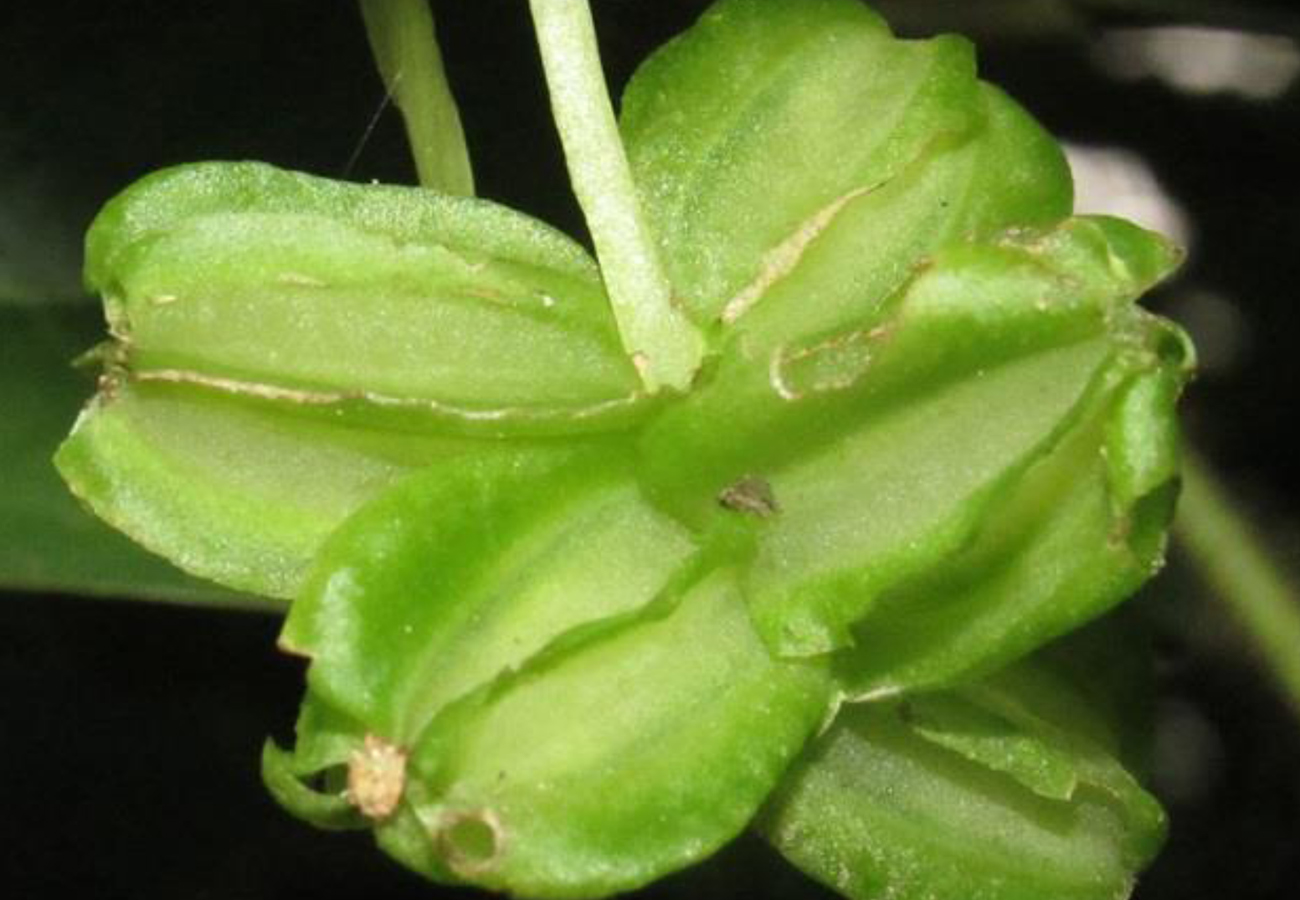Abstract
Dioscorea magnibracteata is described and formally presented as a new species based on specimens identified with unpublished names by Temple Clayton. This species occurs exclusively in the seasonally deciduous dry tropical forest of coastal Ecuador, a fairly threatened environment. This new species is monoecious and features staminate flowers with six stamens but differs markedly from all other species of Neotropical Dioscorea by the staminate inflorescences with very large cymbiform bracts and toothed to lacerated margin. We provide a morphological description as well as information on habitat, geographic distribution and taxonomic comments that include the morphological delimitation of the new species and similarities to other species of Dioscorea sect. Monadelpha.
References
<p>Cornejo, X. (2009) Un Nuevo Estatus para <em>Sorocea sprucei</em> subsp. <em>subumbellata</em> (Moraceae). <em>Novon</em> 19: 297–299. https://doi.org/10.3417/2005160</p>
<p>Couto, R.S., Tenorio, V., Alzer, F. da C., Lopes, R.C., Vieira, R.C., Mendonça, C.B.F., Gonçalves-Esteves, V. & Braga, J.M.A. (2014) Taxonomic revision of the <em>Dioscorea campestris</em> species assemblage (Dioscoreaceae). <em>Systematic Botany</em> 39: 1056–1069. https://doi.org/10.1600/036364414X683895</p>
<p>Couto, R.S., Martins, A.C., Bolson, M., Lopes, R.C., Smidt, E.C. & Braga, J.M.A. (2018) Time calibrated tree of <em>Dioscorea</em> (Dioscoreaceae) indicates four origins of yams in the Neotropics since the Eocene. <em>Botanical Journal of the Linnean Society</em> 188: 144–160. https://doi.org/10.1093/botlinnean/boy052</p>
<p>Delannay, X., Cornejo, X. & Croat, T. (2019) Two new <em>Xanthosoma </em>(Araceae) species from Guayas province, coastal Ecuador. <em>Aroideana</em> 42: 152–165.</p>
<p>Dinerstein, E., Olson, D.M., Graham, D.J., Webster, A.L., Primm, S.A., Bookbinder, M.P. & Ledec, G. (1995) <em>Una evaluación del estado de conservación de las ecoregiones terrestres de América Latina y el Caribe</em>. World Bank, Washington, D.C., 129 pp.</p>
<p>ESRI - Environmental Systems Research Institute. (2017) <em>ArcGIS Desktop, version 10.5.</em> Redlands, USA.</p>
<p>Grisebach, A. (1842) Dioscoreaceae. <em>In</em>: Martius, C.F.P. & Eichler, A.G. (Eds.) <em>Flora brasiliensis </em>v. 3, part. 1. Frid. Fleischer, München, pp. 26–48.</p>
<p>Knuth, R. (1924) Dioscoreaceae <em>In:</em> Engler, H.G.A. (Ed.) <em>Das Planzenreich</em> 87 (IV. 43). H.R. Engelmann (J. Cramer), Leipzig, 387 pp.</p>
<p>Knuth, R. (1925) X. Dioscoreaceae novae. I. <em>Repertorium Specierum Novarum Regni Vegetalis </em>21: 77–81. https://doi.org/10.1002/fedr.19250210111</p>
<p>Knuth, R. (1926) XXXVIII. Dioscoreaceae novae. II. <em>Repertorium Specierum Novarum Regni Vegetalis </em>22: 22–25. https://doi.org/10.1002/fedr.19260222206</p>
<p>Knuth, R. (1930) XVI. Dioscoreaceae novae. <em>Repertorium Specierum Novarum Regni Vegetalis </em>28: 6–13. https://doi.org/10.1002/fedr.4870280602</p>
<p>Kunth, C.S. (1850) <em>Enumeratio Plantarum</em>. Volume 5. J. G. Collae, Stuttgart & Tübingen, 908 pp</p>
<p>Linnaeus, C. (1753) <em>Species plantarum, exhibentes plantas rite cognitas ad genera relatas</em>. Holmiae, Impensis Laurentius Salvius, Stockholm, 823 pp.</p>
<p>Morrone, J.J. (2014) Biogeographical regionalisation of the Andean region. <em>Zootaxa</em> 3936 (2): 207–236. https://doi.org/10.11646/zootaxa.3936.2.3</p>
<p>Raz, L. (2016) Untangling the West Indian Dioscoreaceae: new combinations, lectotypification and synonymy. <em>Phytotaxa</em> 258 (1): 26–48. https://doi.org/10.11646/phytotaxa.258.1.2</p>
<p>Schubert, B.G. (1984) Temple Clayton, Chemist and amateur botanist, 1914–1978. <em>Journal of the Arnold Arboretum</em> 65: 1–4. https://doi.org/10.5962/p.185914</p>
<p>Sierra, R. (1999) <em>Propuesta Preliminar de un Sistema de Clasificación Vegetal para el Ecuador Continental</em>. Proyecto Inefan-GEF-BIRF y Ecociencia, Quito, Ecuador, 174 pp.</p>
<p>Uline, E.H. (1897) Dioscoreaceae <em>In:</em> Engler, A. & Prantl, K.A.E (Eds.) <em>Die natürlichen Pflanzenfamilien. </em>Supplement 2 (part 5). Engelmann, Leipzig, pp. 80–87.</p>
<p>Valverde, F. (1991) <em>Estado Actual de la Vegetación Natural de la Cordillera Chongón-Colonche</em>. Universidad de Guayaquil. Ecuador. 387 pp.</p>
<p>Viruel, J., Forest, F., Paun O., Chase M.W., Devey, D., Couto, R.S., Segarra-Moragues, J.G., Catalán, P. & Wilkin, P. (2018) A nuclear Xdh phylogenetic analysis of yams (<em>Dioscorea</em>: Dioscoreaceae) congruent with plastid trees reveals a new Neotropical lineage. <em>Botanical Journal of the Linnean Society</em> 187: 232–246. https://doi.org/10.1093/botlinnean/boy013</p>
<p>Willdenow, K.L. (1806) <em>Species Plantarum</em>. Volume 4 (part 2). G.C. Nauk, Berlin, 1157 pp. (parts 1 & 2 together)</p>


